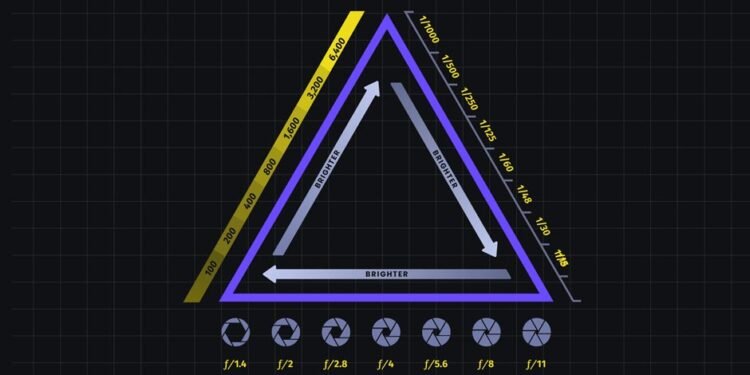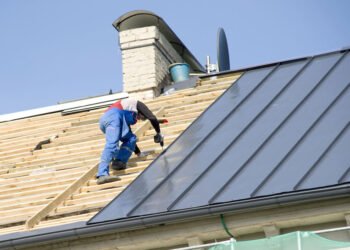Understanding the intricate relationships between shutters and aperture is essential for capturing well-exposed and creatively composed images. Whether through self-exploration or photography courses, photographers learn to master the interplay between these two fundamental elements. Shutters control the duration of light exposure, while the aperture regulates the amount of light entering the camera. This article will examine the complexities of shutters, aperture, and their relationships, discussing their functions, effects, and how photographers can effectively utilize them. Courses on photography can enhance photographers’ skills and understanding of these essential elements.
The Shutter
The shutter, an essential mechanical component within the camera, acts as a gateway between the outside world and the camera’s image sensor. Comprised of an opening and closing curtain, it skillfully controls the time that light is allowed to reach the sensor. When the shutter button is pushed, the curtain elegantly slides open, exposing the image sensor and permitting light to pass through. After a carefully calculated amount of time, the closing curtain gently follows, concluding the exposure process. This coordinated interplay between the curtains determines the exposure time or shutter speed, ultimately shaping the visual outcome of the photograph.
Shutter Speed
It is the length of time the camera’s shutter stays open, exposing the image sensor to light. It is typically measured in fractions of a second, such as 1/500 or 1/125, or even in longer durations, like 1/2 or 1 second. The choice of shutter speed allows photographers to control how much motion is frozen or blurred within their images. Faster shutter speeds, such as 1/1000 or 1/2000, capture an instantaneous moment, freezing fast-moving subjects with remarkable precision. Conversely, slower shutter speeds, like 1/30 or 1/4, introduce deliberate motion blur, which can evoke a sense of movement and dynamism.
Aperture
Aperture refers to the adjustable opening in the camera lens that regulates the amount of light reaching the image sensor. It consists of a series of overlapping blades that can be expanded or contracted to create larger or smaller openings, respectively. The size is measured in f-stops, denoted by numbers like f/2.8, f/4, f/8, and so forth. A wider aperture, characterized by a smaller f-stop number, permits a greater amount of light to pass through. In contrast, a narrower aperture, represented by a more significant f-stop number, restricts the light’s passage.
Depth of Field
The distance range within a photograph appears sharp and in focus. The aperture setting directly influences it. A wide or large aperture (small f-stop number) produces a shallow depth of field, resulting in a selective focus where the subject is sharply defined. At the same time, the background beautifully melts away into a pleasing blur. This technique is widely employed in portrait photography, effectively isolating the subject from distracting surroundings and directing the viewer’s attention to the main focal point. On the other hand, a larger aperture (smaller f-stop number) produces a shallower depth of field, blurring the foreground or background for artistic effect. This technique is commonly employed in landscape photography, capturing intricate details from the foreground to the distant horizon.
The Relationship between Shutter Speed and Aperture
Understanding the intricate relationship between shutter speed and aperture is paramount in achieving optimal exposure. These two elements work harmoniously to regulate the amount of light entering the camera and dictate the overall exposure level of the image. When one adjusts either the shutter speed or the aperture, it is crucial to compensate with the corresponding adjustment of the other element to maintain the desired exposure. For example, when opting for a faster shutter speed to freeze fast-moving subjects, less light is allowed to enter the camera, necessitating a broader aperture to compensate and ensure adequate exposure. On the contrary, when opting for a slower shutter speed for long exposures, more light is permitted to enter the camera, requiring a narrower aperture to prevent overexposure.
Creative Effects
Comprehending the relationship between shutter speed and aperture allows photographers to experiment and create many artistic effects. By deliberately selecting a slow shutter speed and introducing controlled camera movement or capturing a moving subject, photographers can artfully convey a sense of motion blur, imparting a dynamic and energetic ambience to their images. Conversely, utilizing fast shutter speeds allows photographers to freeze a fleeting moment, capturing remarkable detail and preserving the essence of a precise instant. Combining various aperture settings with different shutter speeds further empowers photographers to fine-tune their exposure and depth of field, resulting in visually captivating and emotionally evocative photographs.
Practical Tips
To master the intricate relationships between shutters, aperture, and their effects, photographers must engage in hands-on experiences and experimentation. By exploring various combinations of shutter speed and aperture, photographers can witness firsthand the impact on exposure, depth of field, and creative possibilities. Additionally, familiarizing oneself with the camera’s manual mode unlocks complete control over shutter speed and aperture settings, providing a deeper understanding of their relationships and potential effects. Practice and an astute sense of composition will enable photographers to wield these elements confidently, capturing striking and visually engaging photographs that effectively communicate their unique artistic vision.
Conclusion:
In conclusion, comprehending the intricate relationships between shutters, aperture, and their effects is vital for photographers striving to capture well-exposed and artistically composed images. By mastering these elements, photographers can control exposure, freeze or blur motion, and create various artistic effects. Through self-exploration or enrolling in photography courses, photographers can deepen their understanding of shutters and aperture, enhancing their ability to create captivating and visually compelling photographs. By honing their skills and embracing creative possibilities, photographers can confidently wield shutters and aperture to capture striking images that reflect their unique artistic vision.












